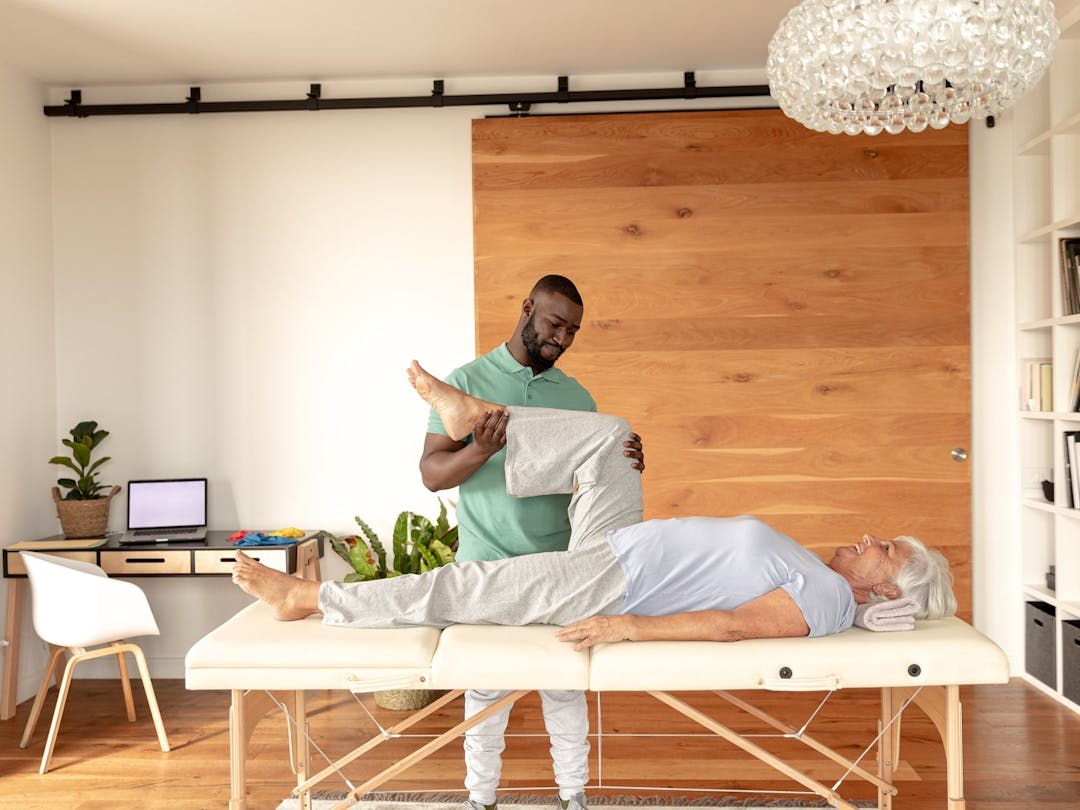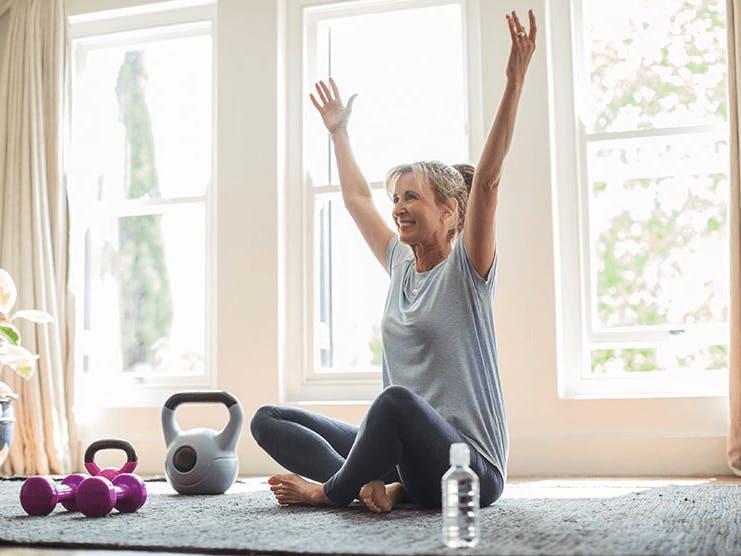
Strength training isn’t just about looking buff. For older adults, it has major health benefits. Here’s how to get started safely.
As you get older, your body goes through lots of changes. Your hair color, skin elasticity, and even appetite can be different. One big shift you might notice involves your strength, as your muscle mass becomes harder to maintain. But why?
“A lot of it has to do with hormones depleting,” says Noam Tamir, founder of TS Fitness in New York City. Tamir is also a certified strength and conditioning specialist. “As the years go by, women’s estrogen levels and men’s testosterone levels drop. Both of those hormones play a role in maintaining muscle mass.”
But the other reason for diminishing strength, says Tamir, is bodily wear and tear. Maybe you’re not able to carry as much weight, or your balance is off. Your sensory systems may not be as sharp as before. In response, many people start looking for shortcuts: They push a shopping cart when they could carry a basket, or they take the elevator when they could go up a flight of stairs. Over time, these little shortcuts turn a small problem into a bigger one.
No matter how your muscle mass faded, the solution is fairly simple: Strength training, also called resistance training. This type of exercise puts a load on your muscles so they have to perform work. That load can come from dumbbells, barbells, or your own body weight. Working out like this does more than just help you maintain muscle mass and strong bones. It also helps you avoid injury, stay mentally fit, and have better mobility in the years to come.
And you don’t have to lift every day like a bodybuilder to see results. Your body will respond to even a small amount of weightlifting. In a 2019 study in the journal Frontiers in Physiology, 65- to 75-year-olds who committed to just one resistance session a week had lower blood pressure, less inflammation, and better cholesterol numbers.
If your goal is to shed belly fat, strength training can help with that too. A study in the journal Cell Metabolism found that resistance training could help obese adults over age 65 maintain muscle even while losing weight. And over time, says Tamir, you’ll feel your body growing stronger and more energized. “A single weekly strength session has huge benefits for the nervous system,” he says. “And a neural response can help create strength and stability.”
The secret is to start slowly. Be patient as you develop your foundation of confidence and ability. Then you’ll have something stable to build on for years to come.
3 Easy and Effective Moves to Do on Day 1
If you’re just getting started in strength training, you may be unsure about where to begin or what to do. Never fear! Below, Tamir shares three beginner-friendly strength moves that are appropriate for older adults. They’re meant to provide a taste of resistance while you start working on your form.
Perform all three moves consecutively with a minute’s rest between each. When you finish, rest for two minutes, and then repeat.
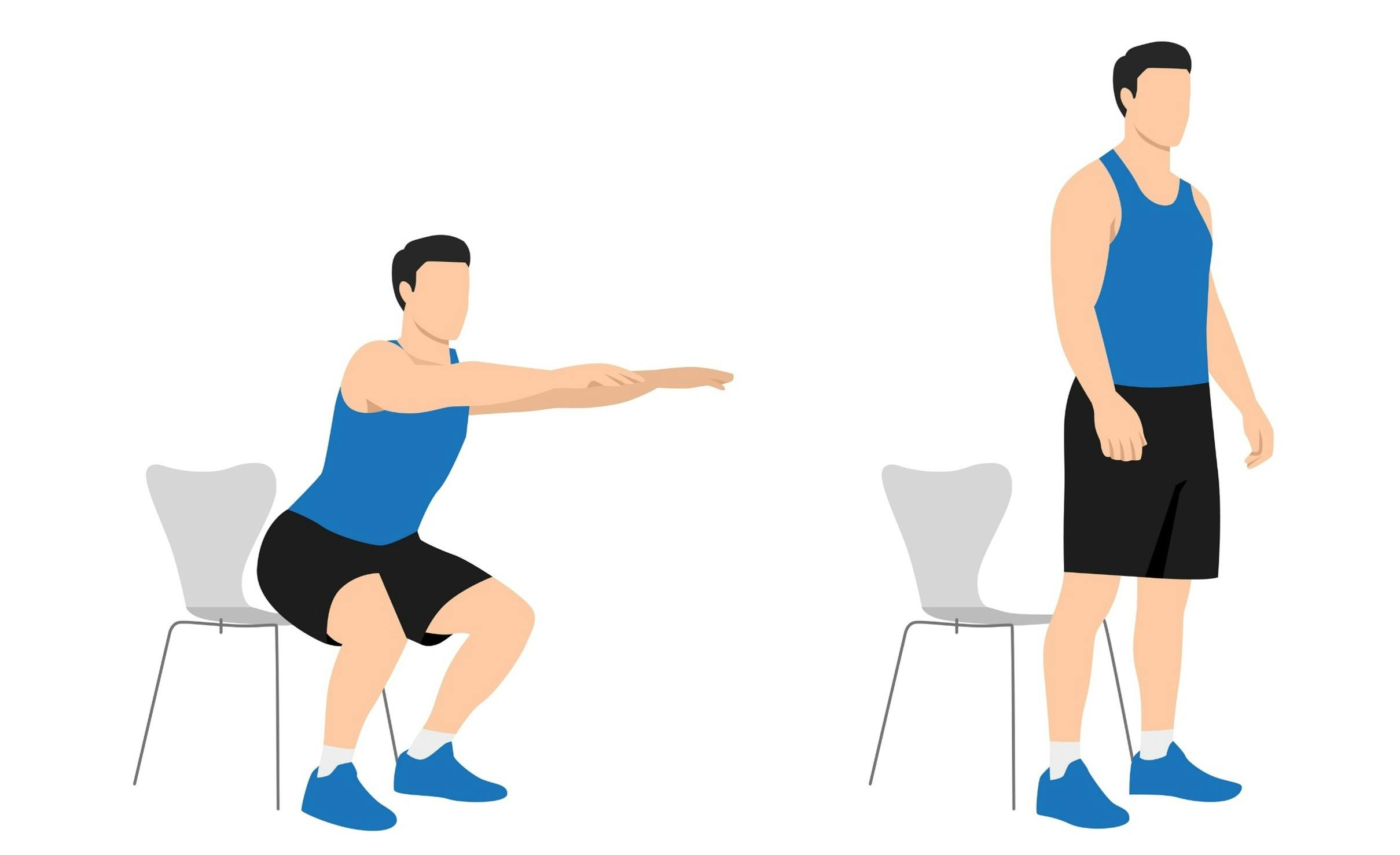
1. Squat to Chair or Bench
With a bench or chair directly behind you, stand with your toes pointed slightly outward and your feet a little wider than hip-width. Extend your arms straight overhead, push your chest out, and then push your knees outward as you sit back and down. Keep your weight in your heels and your arms high. Keep lowering your body until your glutes (your butt-cheek muscles) touch the bench or chair. Now squeeze your glutes and push through your heels to stand back up.
That’s one rep (short for “repetition”). Do 12 to 15 reps before continuing to the next move.
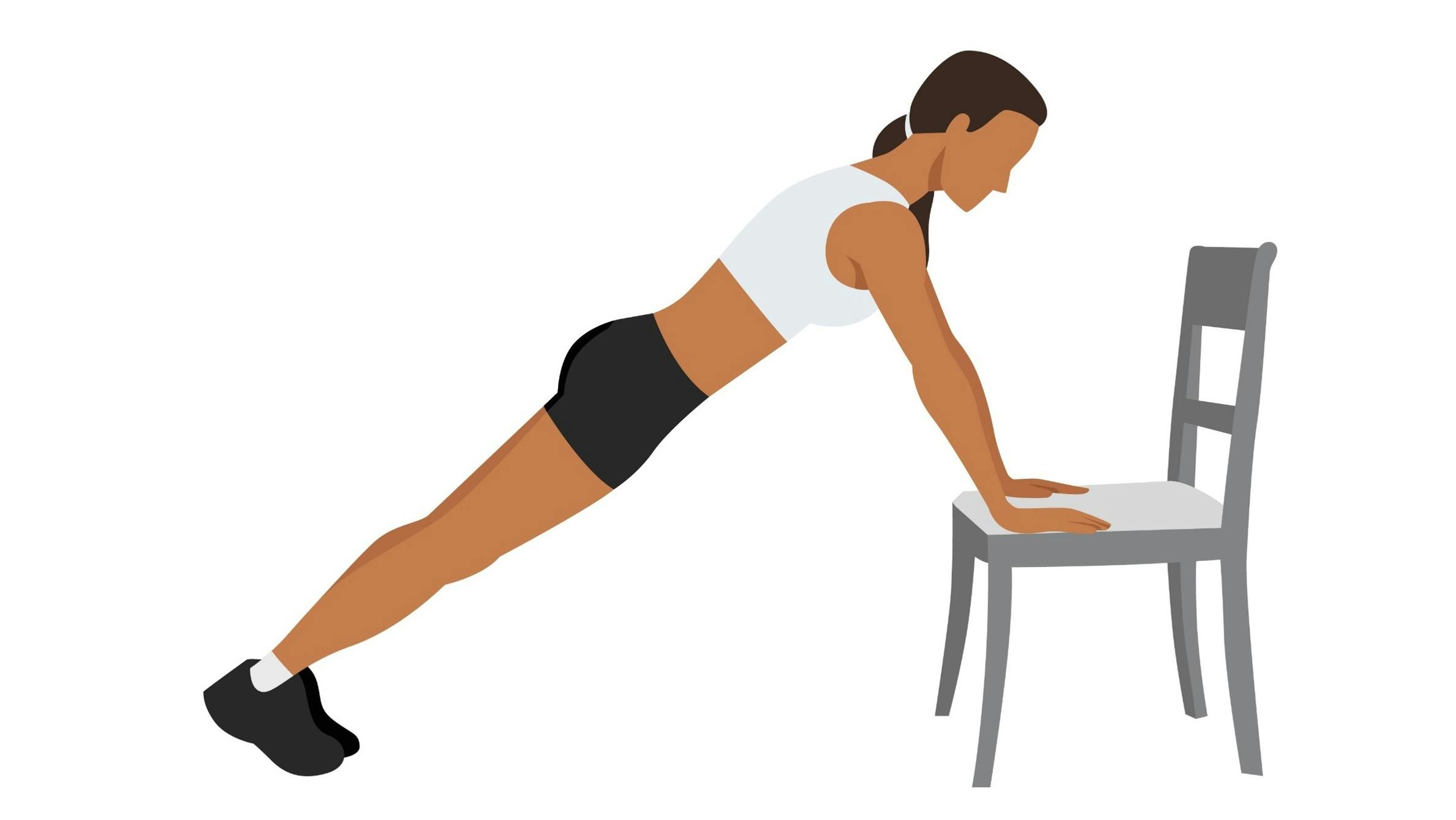
2. Modified Plank on Bench
Place your hands about shoulder-width apart on the bench. Keeping your shoulders stacked directly over your wrists, walk your feet back so your legs are fully extended behind you. You should be balancing only on your toes and hands. Brace your core and squeeze your glutes, keeping your body in a straight line from head to toes. Stay flexed and hold that position for 20 seconds.
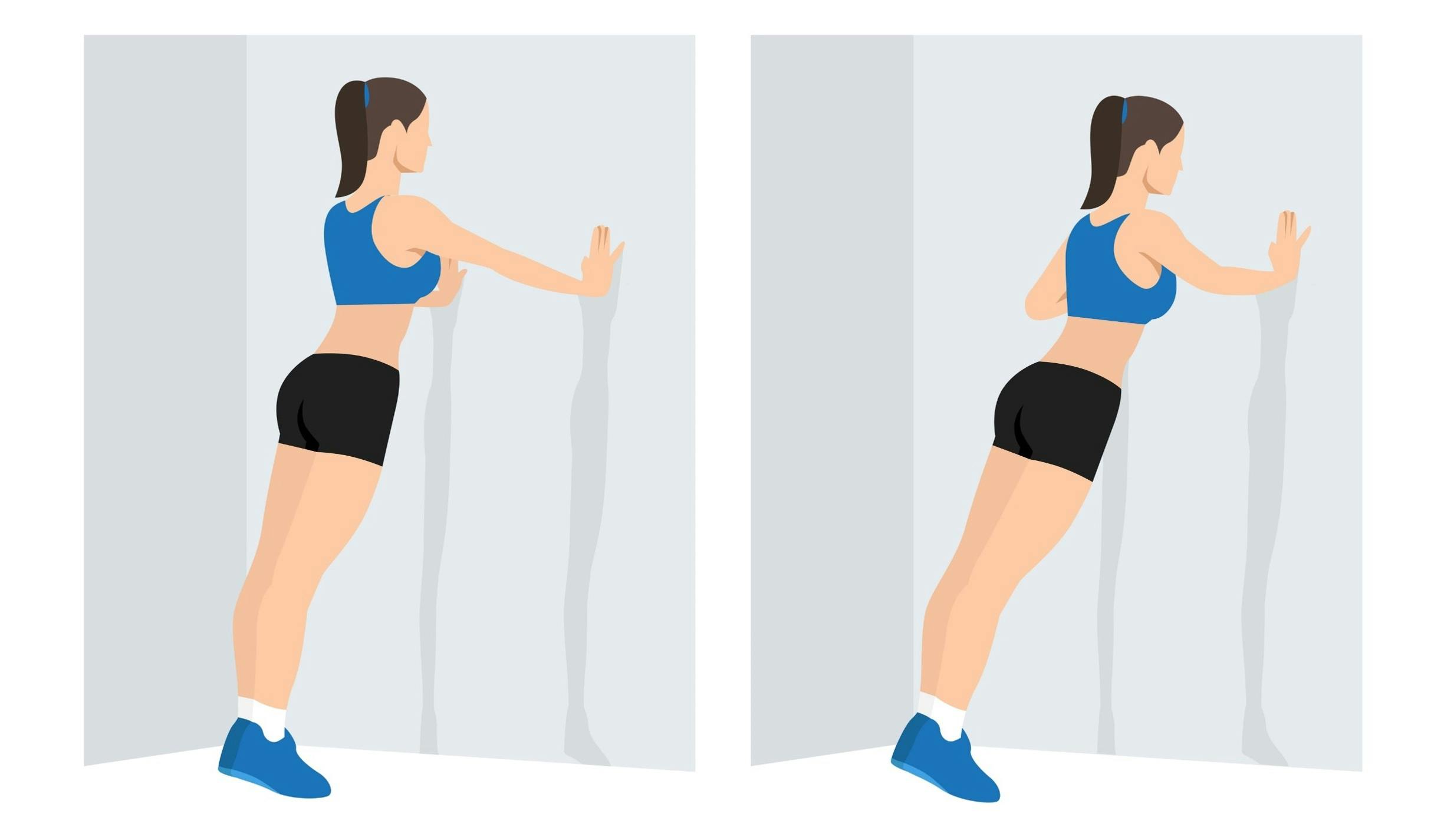
3. Wall Pushup
Place your hands shoulder-width apart on the wall in front of you. Keep them firmly planted and step your feet back until your arms are fully extended and your body is angled slightly forward. Keeping your toes rooted into the ground and hands flat against the wall, bend at your elbows to lower your chest toward your hands, allowing your hips, core, and legs to move forward in one motion. Push back up. That’s one rep. Do 12 to 15 reps.
Build Out Your Routine
Pay attention to how you feel in the hours and days after the exercises above. Are you energized? Sore? Achy?
If you feel any sharp pain, you should talk to a doctor. But if it’s just muscle soreness, keep doing the routine once a week until it becomes easy. Then you can gradually start building up the intensity.
One way to do that, says Tamir, is to modify the three moves above to make them more challenging. For example, you could do the squat without the bench behind you, which would allow you to drop down lower. Or you could do the plank or pushup directly on the floor, which puts more weight on your shoulders.
As your muscles get used to the movements, you can start adding weight. One option: While doing a squat, lower your arms to your sides and hold a 10-pound dumbbell in each hand. Now you’re squatting your own bodyweight plus an additional 20 pounds.
If you’re not sure which exercises to add next, don’t be embarrassed to ask a professional for suggestions. Most gyms have trainers walking the floor or even working the front desk. That’s what they’re there for. They can show you how to do basic moves such as lunges, step-ups, dumbbell rows, and dumbbell chest presses.
Take Steps to Avoid Injury
Strength training can keep you strong and healthy, but you don’t want to get injured. So be proactive about having a safe workout. Tamir advises starting every session with a 10-minute mobility warmup.
Use your warmup time to get your body moving and stretch your muscles: Touch your toes, reach for the sky, roll your neck slowly. Focus on any part of your body that feels tight. (You can find stretches to reduce pain here.) “Your body is stiffer when you’re older, so you need to warm up the nervous system,” says Tamir. This creates blood flow, he says, which for anyone with heart issues is important. A warmup keeps you from shocking your body by just jumping into exercise.
You also want to avoid overtraining, because that can lead to injury as well. Signs of overtraining include being extremely sore after the workout, achy joints, extreme fatigue, and any sharp pain. “If you experience any of these, stop what you’re doing and get in touch with your doctor or a medical professional to find out what’s going on,” says Tamir.
Remember to Hydrate
Your liquid intake needs also change as you get older. Even if you’re not feeling parched, you should be drinking lots of water while you exercise. “Hydration is super important to keep joints fluid and help with energy levels,” says Tamir. “It even has an impact on muscle growth and calorie burn.”
The recommended amount of daily water for avoiding chronic disease is 125 ounces (3.7 liters) for men and 90 ounces (2.7 liters) for women, according to the National Academies of Sciences, Engineering, and Medicine. That’s a good number to hit every day, but it’s especially important while training.
Time Your Protein Intake
To build strength, you need to consume protein, which provides the building blocks for muscle. The general protein recommendation for adults ages 50 and up is 0.4 grams of protein per pound of body weight each day. But older adults, especially if they’re active, can benefit from even more, says Leslie Bonci, MPH, RD. Bonci is the founder of the Pittsburgh-based nutrition consulting company Active Eating Advice. “A better amount would be 0.5 grams of protein per pound per day,” she says. If you weigh 200 pounds, that’s 100 grams of protein a day.
But don’t try eating all that protein at once. Bonci suggests spreading it out throughout the day so you’re getting 25 to 30 grams at each meal. And grab a protein-rich snack just after working out. “Try to get in 20 grams of protein within the hour after exercise, along with some carbs,” says Bonci. “That’s the ideal for muscle synthesis.”
Protein can come from a variety of sources, so feel free to mix it up. “Think about palatability, affordability, and accessibility,” Bonci says. “A protein shake is fine, but so is yogurt, hard-boiled eggs, cottage cheese, string cheese, or jerky.”
Additional resources
The National Academies of Sciences, Engineering, and Medicine
External Website Link


